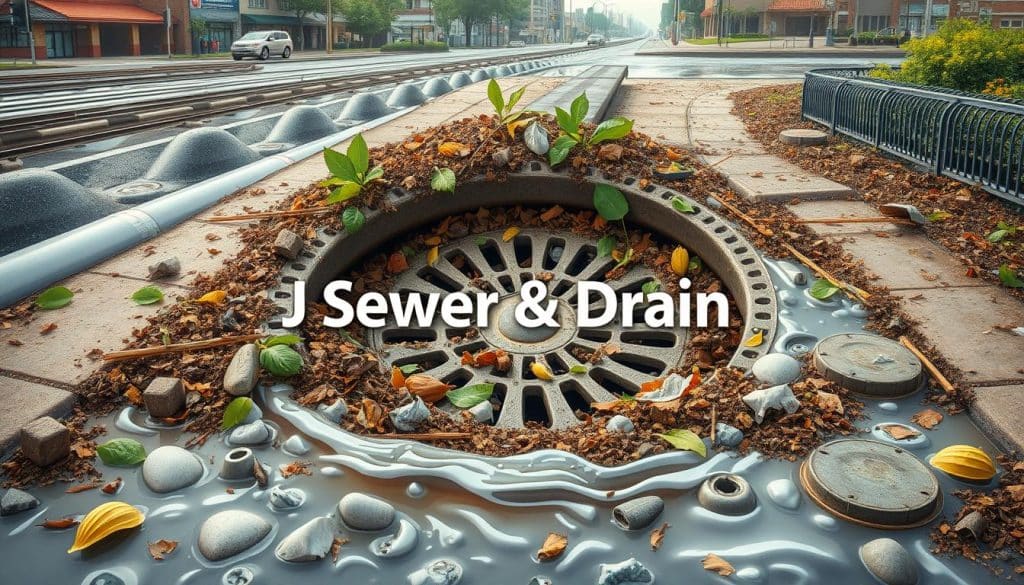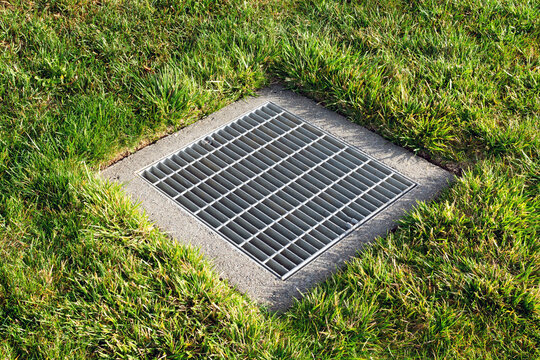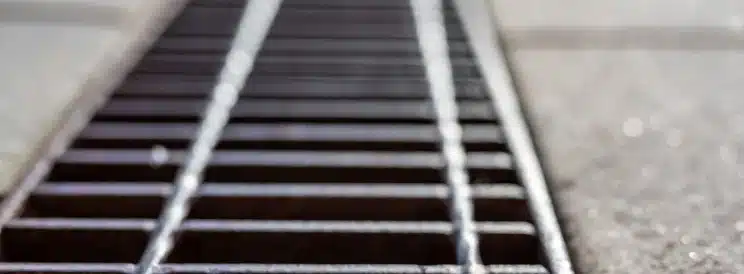Have you ever wondered What is a Catch Basin and How Does it Work? What works hard to stop urban flooding and protect our environment?
Catch basins, also known as storm drains, are key parts of our drainage systems. They manage stormwater runoff from streets, sidewalks, and parking lots. This stops flooding, controls erosion, and cuts down pollution.
They are made from strong materials like concrete or metal. Catch basins have a level top to catch rainwater. This water then flows through pipes or canals to rivers or lakes.
It’s important to keep catch basins clean. This means removing debris and sediment to avoid blockages. Blockages can cause flooding and harm water quality.
Key Takeaways
- Catch basins, also known as storm drains, are vital for managing urban stormwater runoff.
- They help prevent urban flooding, control erosion, and reduce environmental pollution.
- Constructed from durable materials like concrete or metal, catch basins are integrated into the ground.
- Regular maintenance, including debris and sediment removal, ensures proper functionality.
- Properly maintained catch basins direct water to appropriate waterways, such as rivers and lakes.
What is a Catch Basin?
A catch basin is key in managing storm drains. It collects water from hard surfaces like streets and parking lots. This helps prevent floods by moving water before it causes damage.
It also captures sediment and pollutants. This keeps the water clean and prevents harm to rivers and streams.
Definition and Purpose
Catch basins are important in drainage systems. They stop water buildup by catching and moving runoff. This reduces flooding and erosion risks.
They also keep water clean by trapping debris and pollutants. This improves the water quality before it reaches rivers and streams.
Types of Catch Basins
There are many types of catch basins for different needs. Open systems have grates for easy access. They’re good for areas needing little maintenance.
Closed systems have solid covers to block debris. They need more upkeep to avoid clogs. These systems should be placed at property low points. For bigger areas, you might need more than one.
How Does a Catch Basin Work?
Catch basins are key in managing urban water systems. They capture stormwater runoff and reduce pollution. These structures are vital for good surface water drainage and pollution control.
Catching Stormwater Runoff
Catch basins are placed in low-lying areas to collect stormwater runoff. This runoff flows into catch basins through grates. It then enters a chamber before being directed into the drainage system.
Directing Water to Drainage Systems
Inside the catch basin, water is guided to underground drainage systems. This is crucial for managing stormwater runoff. It prevents water from pooling on the surface, which could cause flooding and erosion. The water is then piped to larger water management systems like retention ponds or wetlands.

Filtration and Pollution Control
Filtration is a key function of catch basins. As water enters, solid particles and debris settle at the bottom. The cleaner water then moves to the drainage pipes.
This natural filtration process is vital for pollution control. It keeps contaminants from reaching natural water bodies. This protects local aquatic ecosystems. Regular maintenance of catch basins is crucial for their effectiveness in surface water drainage and pollution control.
The Importance of Catch Basins in Urban Areas
Catch basins are key in urban areas for managing stormwater. They prevent water buildup that could damage buildings and public spaces. These basins capture runoff and steer it away from important structures.
Catch basins do more than just manage water. They also filter out dirt and trash. This helps keep local water bodies clean, preventing pollution from urban runoff.
Installing catch basins in areas prone to flooding is vital for public health. They stop water from gathering, reducing flood risks. This protects people from health dangers.
In short, catch basins are crucial for urban areas. They manage stormwater, improve environmental safety, and protect public health. They help keep cities sustainable and safe.
Catch Basin Design and Installation
Designing and installing a catch basin is key for good drainage. It’s important for both homes and businesses. The right catch basin helps control water and lasts longer.

Choosing the Right Type
Choosing the right catch basin depends on several things. These include the climate, how much water you expect, and your property’s layout. Each factor helps manage water flow and avoid drainage problems.
Getting help from drainage experts is a smart move. Companies like J Sewer & Drain Plumbing Inc. in Chicago, IL, can guide you. They help pick the best catch basin for your place, making sure it meets your needs.
Installation Considerations
Installing a catch basin needs to be done right. It requires knowing about water flow and how much water the basin can handle. This ensures it works well during storms.
Experts know how to place and set up the catch basin. They make sure it fits well with your drainage system. J Sewer & Drain Plumbing Inc. is dedicated to quality. They offer a 5-year warranty on underground repairs and a 1-year warranty on above-ground services. This means their installations are reliable and last.
Maintaining Your Catch Basin
Keeping your catch basin in good shape is key to its long life and effectiveness. Regular upkeep and knowing common issues can protect your property from water damage. It also keeps your drainage system working well.
Regular Maintenance Tasks
Keeping your catch basin clean is a must. Clear out leaves, trash, and sediment regularly. Experts like J Sewer & Drain Plumbing Inc. can help with this. It’s also important to check for any damage that might affect its performance.
Common Problems and Solutions
Debris buildup can cause clogs, a big problem for catch basins. Cleaning it out often helps prevent this. Wear and tear is another issue, but you can fix it before it gets worse.
By keeping the grates clean and fixing small problems early, you can avoid big repairs. This keeps your catch basin working well and saves you money in the long run.
Benefits and Drawbacks of Catch Basins
Catch basins are key in managing water runoff in cities. They offer many benefits and some drawbacks. Knowing both helps communities make smart choices for their stormwater systems.
Pros
Catch basins help prevent flooding by directing stormwater away from buildings. They also clean water by removing pollutants. This makes the water safer for the environment.
They are easy to maintain, which is good for the planet. This helps keep public areas safe and looking nice.
Cons
However, catch basins have some downsides. If they get clogged, they can overflow and damage things. Standing water in them can harm wildlife by attracting pests and trapping animals.
While they might seem cheap at first, neglecting them can lead to big costs later. It’s important to weigh these points for effective stormwater management.
Conclusion
Catch basins are key in modern drainage systems. They help manage water and protect properties from damage. They also play a big role in taking care of our environment.
As cities grow, using catch basins becomes more important. They help control stormwater runoff and improve water quality. This makes them essential for urban areas.
Even though they need regular upkeep and can get clogged, their benefits are huge. Experts like J Sewer & Drain Plumbing Inc. can help keep them working well.
Investing in catch basins offers long-term benefits for cities. They help keep our homes safe and protect the environment. This effort ensures a healthier and more sustainable future for our cities.






